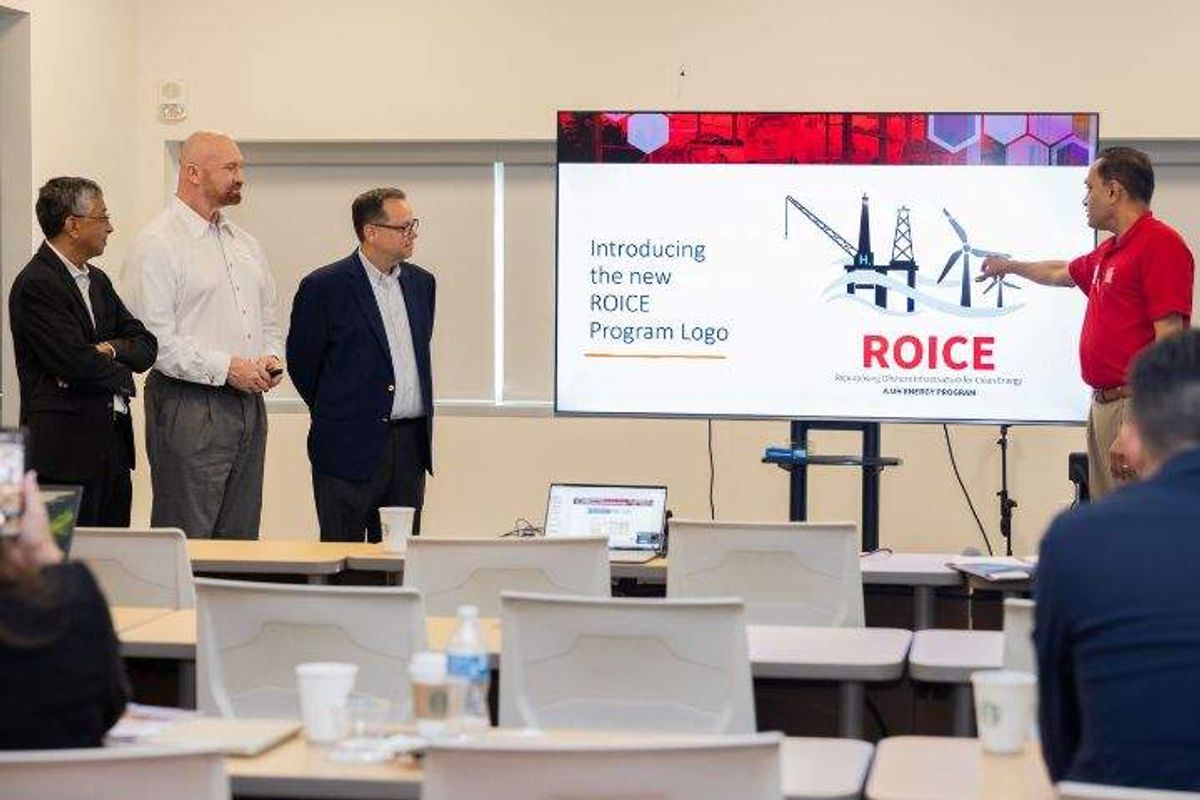UH to explore repurposing offshore tech for clean energy with new partnership
teaming up
The University of Houston has signed a memorandum of understanding with two Houston-based companies that aims to repurpose offshore infrastructure for the energy transition.
The partnership with Promethean Energy and Endeavor Management ensures that the two companies will work closely with UH's Repurposing Offshore Infrastructure for Clean Energy Project Collaborative, or the ROICE project. The collaborative is supported by about 40 institutions to address the economic and technical challenges behind repurposing offshore wells, according to a statement from UH. It's funded in part by the Department of the Treasury through the State of Texas.
“These MOUs formalize our mutual commitment to advance the industry's implementation of energy transition strategies,” Ram Seetharam, Energy Center officer and ROICE program lead, said in the statement. “Together, we aim to create impactful solutions that will benefit both the energy sector and society as a whole.”

Promethean Energy develops, produces, and decommissions mature assets in a cost-effective and environmentally sustainable manner. It began working on the temporary abandonment of nine wells located in the Matagorda Island lease area in the Gulf of Mexico earlier this year.
According to Clint Boman, senior vice president of operations at Promethean, it is slated to become the first ROICE operator of a repurposed oil and gas facility in the Gulf of Mexico.
"Promethean Energy is focused on being the best, last steward of offshore oil and gas production assets, and our strategy is fully aligned with an orderly energy transition,” Borman said in the statement.
Endeavor Management is a consulting firm that works in several industries, including oil and gas, industrial service, transportation, technology and more.
“Our collaboration for this ROICE phase and with the RPC will blend our offshore operations expertise, our years of experience addressing evolving regulatory requirements with our decades of creating innovative commercial enterprises to meet the demands of energy transition” John McKeever, chief growth officer of Endeavor Management, said in the statement. “Together, we will create the blueprint that drives real business impact with the application of clean energy principles.”
The new partnerships will help foster ROICE's second phase. The first was focused on research and reports on how to implement ROICE projects, with the latest published earlier this month. This second phase will focus on innovation and implementation frameworks.
Additionally, at the signing of the MOU, ROICE revealed its new logo that features an oil and gas platform that's been transformed to feature wind turbines, a hydrogen tank and other symbols of the energy transition.
This spring, UH signed a memorandum of understanding with Heriot-Watt University in Scotland to focus on hydrogen energy solutions. The following month, Rice University announced it had inked a strategic partnership agreement with Université Paris Sciences & Lettres to collaborate on "fields of energy and climate," among other pressing issues. Click here to read more.
- DOE deploys more than $10M into Houston-related carbon capture projects ›
- Houston SaaS startup on a mission of decarbonizing public transportation secures SBIR grant ›
- Energy industry veteran named CEO of Houston hydrogen co. ›
- Why this organization is focused on cultivating the future of energy transition innovation ›
- New Houston study shows health impacts of full vehicle electrification in major U.S. cities ›
- New report reveals EV adoption in Texas remains low ›
- 4 student-led sustainability-focused startups scored funding at annual Houston competition ›
- Houston team researching how algae can combat climate change ›
- University of Houston names official energy partner ›





